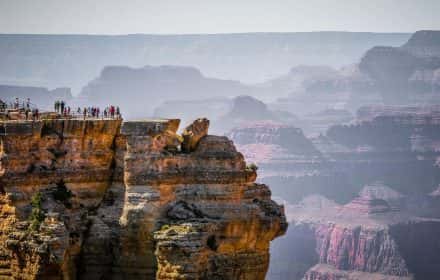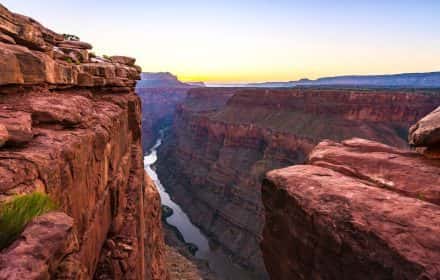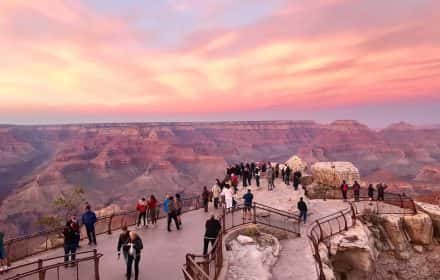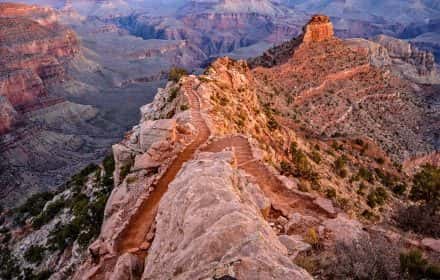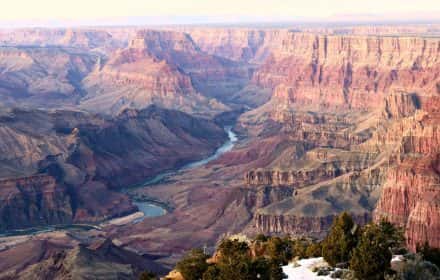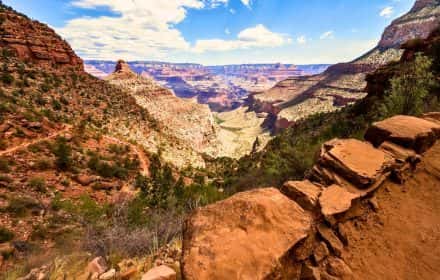This site uses affiliate links, meaning that if you make a purchase through our links, we may earn an affiliate commission.
If you’re heading to the Grand Canyon for the first time, prepare yourself for one of those “wow” moments you’ll never forget. The view from the rim? Absolutely mind-blowing. You’ll find yourself just standing there, taking it all in, and feeling pretty small in the best possible way.
But before you get lost in the endless beauty, let us share a few tips for first visit to Grand Canyon National Park to ensure you get the most out of your adventure. From dodging the crowds to snagging the perfect photo spot, we’ve got you covered.
Grand Canyon National Park / Tips for First Visit to Grand Canyon
- 1. Choose the South Rim for Your First Visit
- 2. Save Time by Flying into the Closest Airport
- 3. Use the East Entrance and Take Desert View Drive
- 4. Visit the Grand Canyon in Any Season
- 5. Book Your Accommodations Early
- 6. Get There Early for Sunrise & Stay Late for Sunset
- 7. Get Your Park Pass Ahead of Time & Consider an Annual Pass
- 8. Use the Grand Canyon Shuttle Bus
- 9. Don’t Rely on Cell Phone Service
- 10. Quick Facts About the Grand Canyon You Should Know
- 11. Check Out the Viewpoints on Hermit Drive
- 12. Take a Scenic Drive Along Desert View Drive
- 13. Hike Below the Rim
- 14. Escape the Crowds And Visit the Grand Canyon’s North Rim
Choose the South Rim for Your First Visit
There are two sides to the Grand Canyon – the South Rim and the North Rim. They are about a 4-hour drive from each other.
If you have never been to the Grand Canyon and you are trying to decide whether to visit the South Rim or the North Rim, then, hands down, go to and spend time at the South Rim.
The South Rim of the Grand Canyon is a spectacular place to experience the beauty and grandeur of the Grand Canyon and the Colorado River as it carves its way through the canyon. However, the Grand Canyon South Rim is a busy place and you will have plenty of company wherever you go.
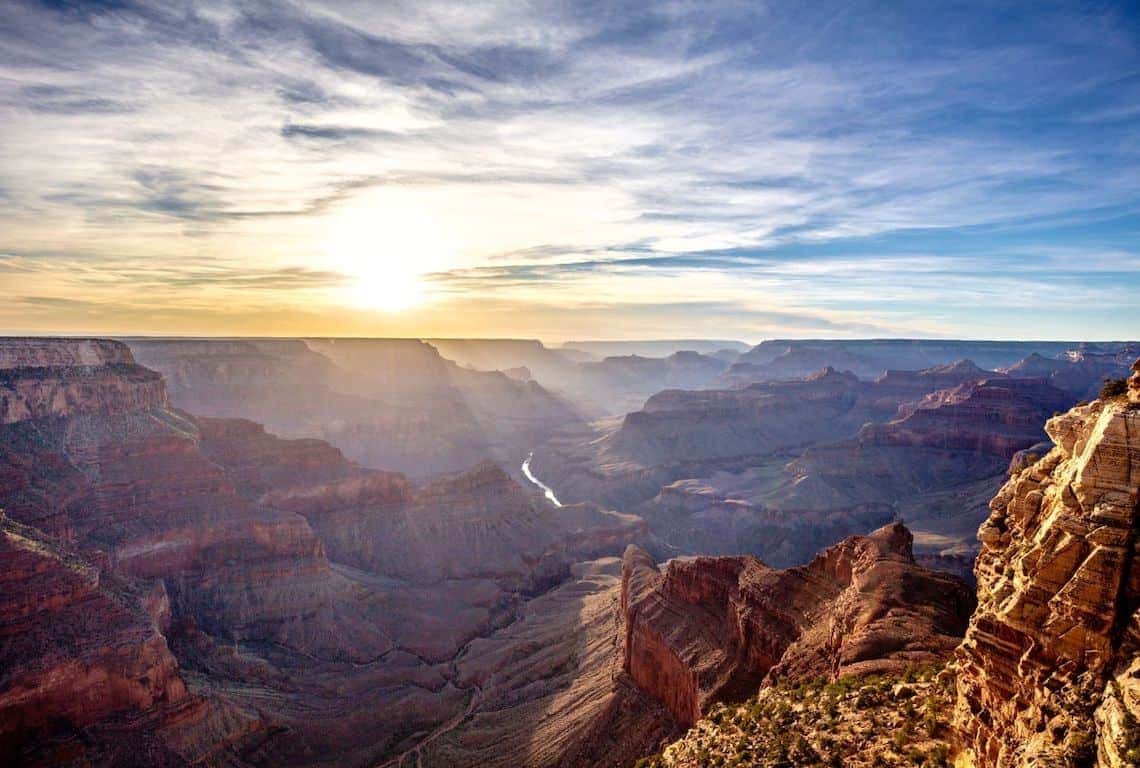
South Rim of the Grand Canyon / Tips for First Visit to Grand Canyon
If you’re looking for solitude, head to the North Rim. It’s the perfect spot for a quieter, more untouched Grand Canyon experience—far from the crowds.
PRO TIP: Keep in mind that while the South Rim is open year-round, the North Rim is only open from mid-May to mid-October due to heavy snowfall in the winter. Lodging and services shut down after October 15, so if the North Rim is on your list, plan accordingly!
Save Time by Flying into the Closest Airport
If you want to cut down on drive time, flying into one of the closest airports to the Grand Canyon can make a big difference!
The Grand Canyon South Rim, the most popular area of the park, is located 60 miles north of Williams, AZ and 80 miles northwest of Flagstaff, AZ.
The closest major airport is Flagstaff Pulliam Airport (FLG), just 86 miles from the park. From there, it’s about a 1 hour and 20-minute drive to the South Rim. Flagstaff has limited flight options, mostly from Phoenix, so availability may be tight.
For those looking to get even closer, Grand Canyon National Park Airport (GCN) is just 7 miles from the South Rim and offers limited commercial air service, mainly from Las Vegas. This is the absolute closest airport, but flights can be pricey and infrequent.
If you don’t mind a longer drive, larger airports offer more flight options:
- Phoenix Sky Harbor International Airport (PHX) – 224 miles (3 hr 30 min)
- Harry Reid International Airport, Las Vegas (LAS) – 271 miles (4 hr 17 min)
- Salt Lake City International Airport (SLC) – 503 miles (8 hr)
Flying into Flagstaff is the best option for a balance between convenience and flight availability, while Phoenix and Las Vegas are great choices if you’re renting a car and don’t mind a scenic road trip.
Use the East Entrance and Take Desert View Drive
The South Rim of Grand Canyon National Park has two main entrances:
- South Entrance (via Hwy 180) – Located near Tusayan, this is the busiest and most popular entry point, especially during peak seasons. Expect long lines, particularly in summer and on holiday weekends.
- East Entrance (via Hwy 64) – Also known as the Desert View Entrance, this is a quieter, more scenic route with far less traffic.
If you want to avoid the crowds and enjoy a breathtaking drive into the park, enter through the East Entrance and take Desert View Drive.
This 25-mile scenic road leads from the East Entrance to Grand Canyon Village and is lined with numerous viewpoints showcasing the canyon from incredible angles.
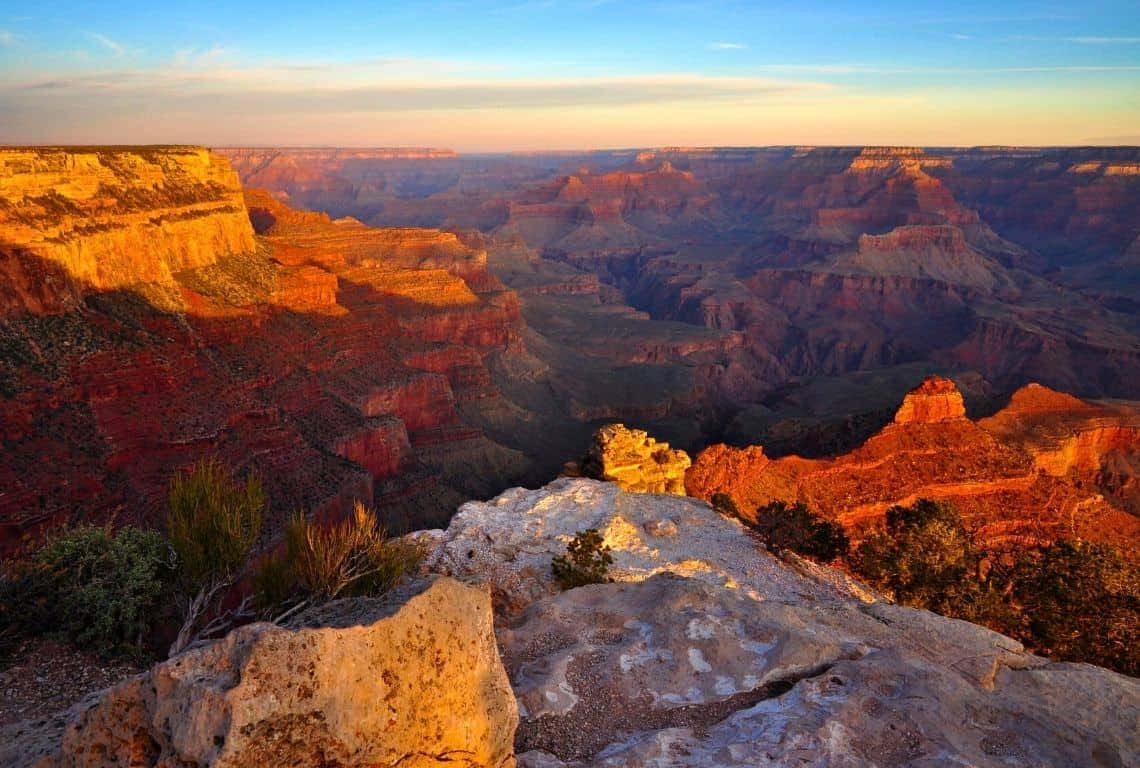
Spectacular Sunrise in Grand Canyon / Tips for First Visit to Grand Canyon
Here are a few key stops you won’t want to miss:
- Desert View Watchtower – A historic stone tower with one of the best panoramic views of the Grand Canyon and the Colorado River.
- Lipan Point – One of the best places to see the river winding through the canyon.
- Navajo Point – The highest viewpoint on the South Rim, offering expansive views.
- Grandview Point – A dramatic overlook with access to the rugged Grandview Trail.
This route not only offers stunning scenery but also allows you to ease into the park at your own pace without the stress of long entry lines. If you’re driving in from Page, Monument Valley, or the Four Corners region, the East Entrance is the best choice for a smoother and more scenic arrival.
Visit the Grand Canyon in Any Season
The Grand Canyon South Rim is stunning year-round, but each season offers a unique experience. Here’s a quick breakdown of what to expect:
- Spring (March to May): Mild temperatures range from 50°F to 70°F, with occasional showers or even snow. It’s a peaceful time to visit with fewer crowds.
PRO TIP: Spring is the best time for hiking. The inner canyon trails are much more comfortable before the summer heat kicks in.
- Summer (June to August): The busiest season with temperatures averaging 80°F at the rim and reaching over 100°F in the inner canyon. Expect crowds and late-afternoon thunderstorms.
PRO TIP: Early mornings or evenings are the best for hiking to avoid the heat.
Grand Canyon National Park at Sunset / Tips for First Visit to Grand Canyon
- Fall (September to November): My favorite time to visit! Temperatures are pleasant (50°F to 70°F), and the crowds thin out. After the monsoon season, the weather is dry, and the fall sunsets light up the canyon in stunning shades of red and orange.
- Winter (December to February): The quietest season with fewer tourists and lots of snowfall. Temperatures can drop below 40°F, and the South Rim gets about 5 feet of snow each year, giving the canyon a magical winter landscape.
Book Your Accommodations Early
There’s nothing like staying inside Grand Canyon National Park—waking up just steps from the rim, watching the sunrise without the crowds, and soaking in the canyon’s beauty right outside your door!
But here’s the catch: you need to book your room at least a year in advance. I’ve learned this the hard way more than once!
If you plan ahead, here are your best options:
- El Tovar Hotel – The most iconic lodge on the rim, full of history and charm. It’s pricey, but if you can book a suite, it’s worth it.
- Bright Angel Lodge & Cabins – Rustic, cozy, and located right at Bright Angel Trailhead. Perfect if you want a more laid-back, historic vibe.
- Kachina & Thunderbird Lodges – Simple but comfortable, and right along the Rim Trail—so you’re never far from a breathtaking view.
- Maswik Lodge – A more budget-friendly option, tucked in a Ponderosa pine forest, just a short walk from the rim.
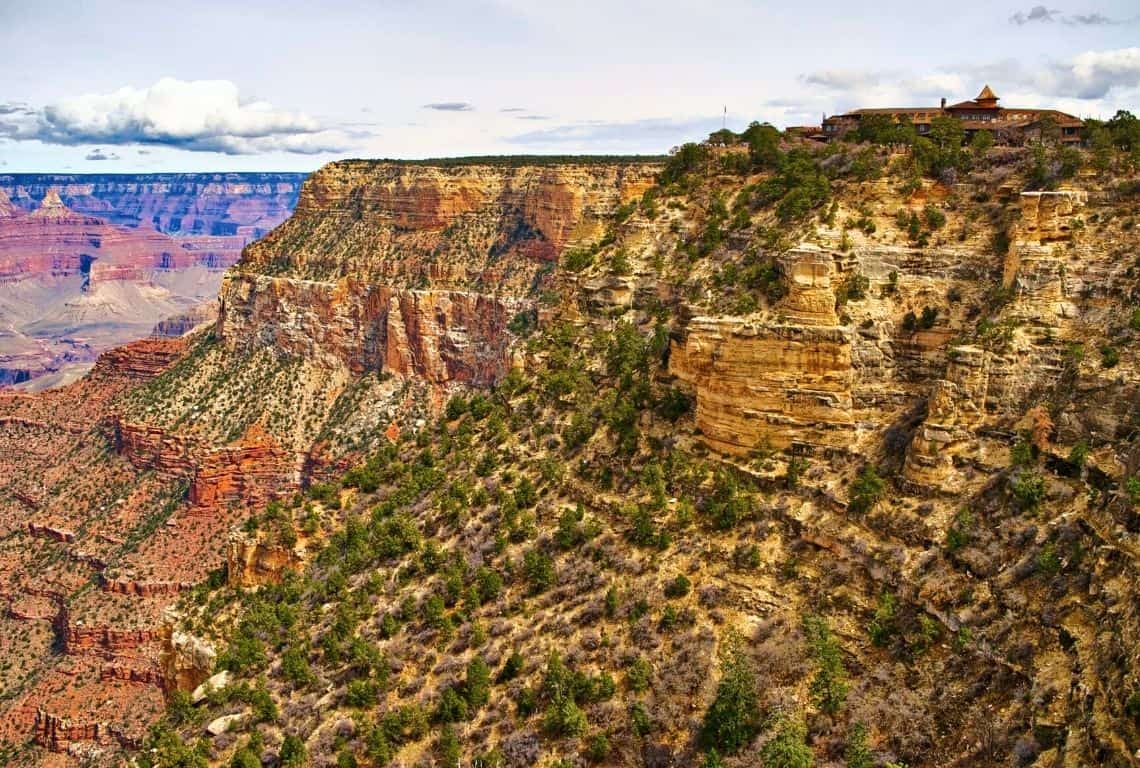
El Tovar Hotel in Grand Canyon / Tips for First Visit to Grand Canyon
But let’s be real—these lodges fill up fast. If you don’t snag a reservation (which has happened to me more times than I can count), Tusayan is your best backup plan.
Tusayan is just 7 miles south of Grand Canyon Village along Highway 64, and while it doesn’t have the same magic as staying on the rim, it’s close enough to make it work.
Plus, if you’re visiting between March 1 and October 30, the park offers a free shuttle from Tusayan hotels to the South Rim Visitor Center—which means you don’t even have to deal with parking inside the park.
Here are a few places I’ve stayed before:
Holiday Inn Express & Suites Grand Canyon by IHG – A solid, no-frills hotel with free breakfast (trust me, that’s a lifesaver before a long hike). The rooms are basic but clean, and it’s one of the most convenient options.
Holiday Inn Resort The Squire at Grand Canyon by IHG – More affordable, with a small arcade and a saloon-style bar—a fun place to unwind after a day of exploring.
The Grand Hotel at the Grand Canyon – The closest thing to a lodge experience outside the park. It has a cozy, rustic feel with comfortable rooms and a good restaurant.
I’ve stayed in all of these at one point or another, and while they don’t compare to waking up inside the park, they get the job done. Just like the lodges, hotels in Tusayan fill up quickly, so book as soon as possible!
Get There Early for Sunrise & Stay Late for Sunset
If you think the Grand Canyon is breathtaking during the day, just wait until you see it at sunrise or sunset. The colors shift by the minute—shades of deep red, orange, and gold painting the canyon walls. It’s pure magic!
PRO TIP: Sunrise and sunset are popular, which means crowds. To get the best experience, arrive early for sunrise and claim your spot at least 30 minutes before the sun comes up. The same goes for sunset—stay a little longer after the sun dips below the horizon, and you’ll catch the canyon glowing in soft twilight colors while most people are already heading out.
Best spots for sunrise:
- Mather Point – One of the most accessible spots, but also one of the busiest. Get here extra early.
- Yaki Point – Less crowded and offers incredible panoramic views.
- Desert View Watchtower – A bit farther from Grand Canyon Village, but totally worth it for a peaceful sunrise.
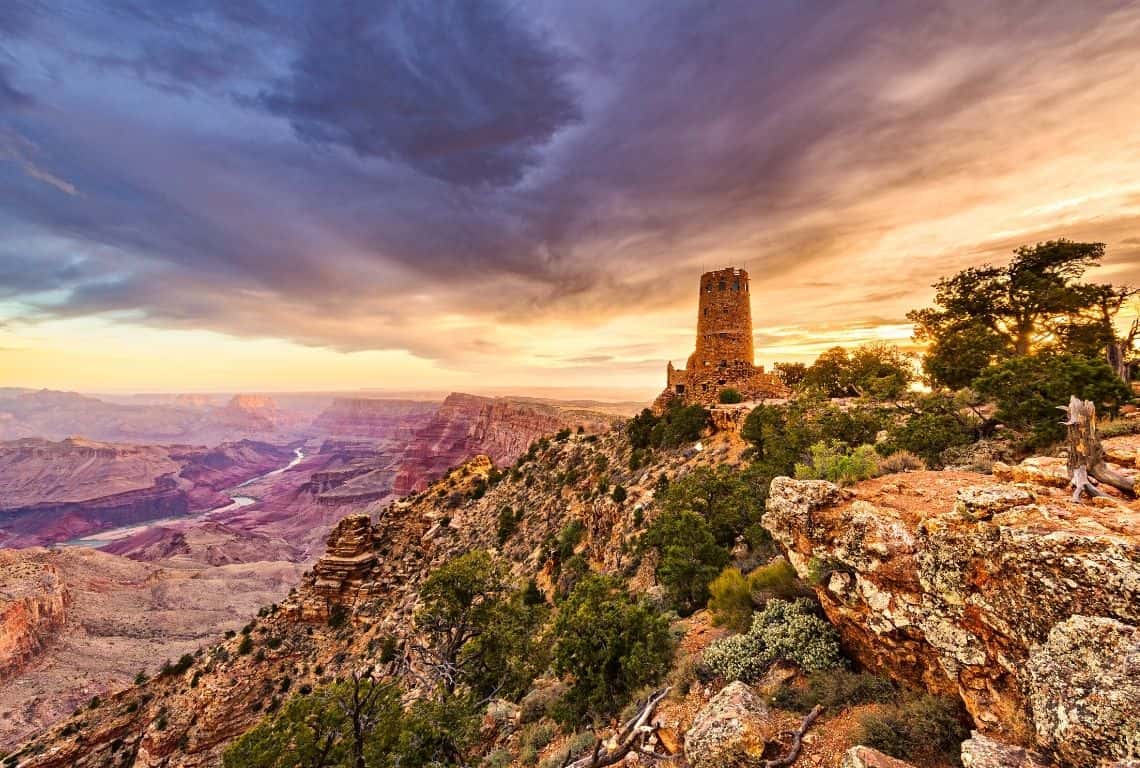
Desert View Watchtower / Tips for First Visit to Grand Canyon
Best spots for sunset:
- Hopi Point – The go-to sunset spot with wide-open views. Arrive early because it fills up fast.
- Yavapai Point – A great alternative with stunning depth views of the canyon.
- Lipan Point – Less crowded and gives you a beautiful perspective of the Colorado River winding through the canyon.
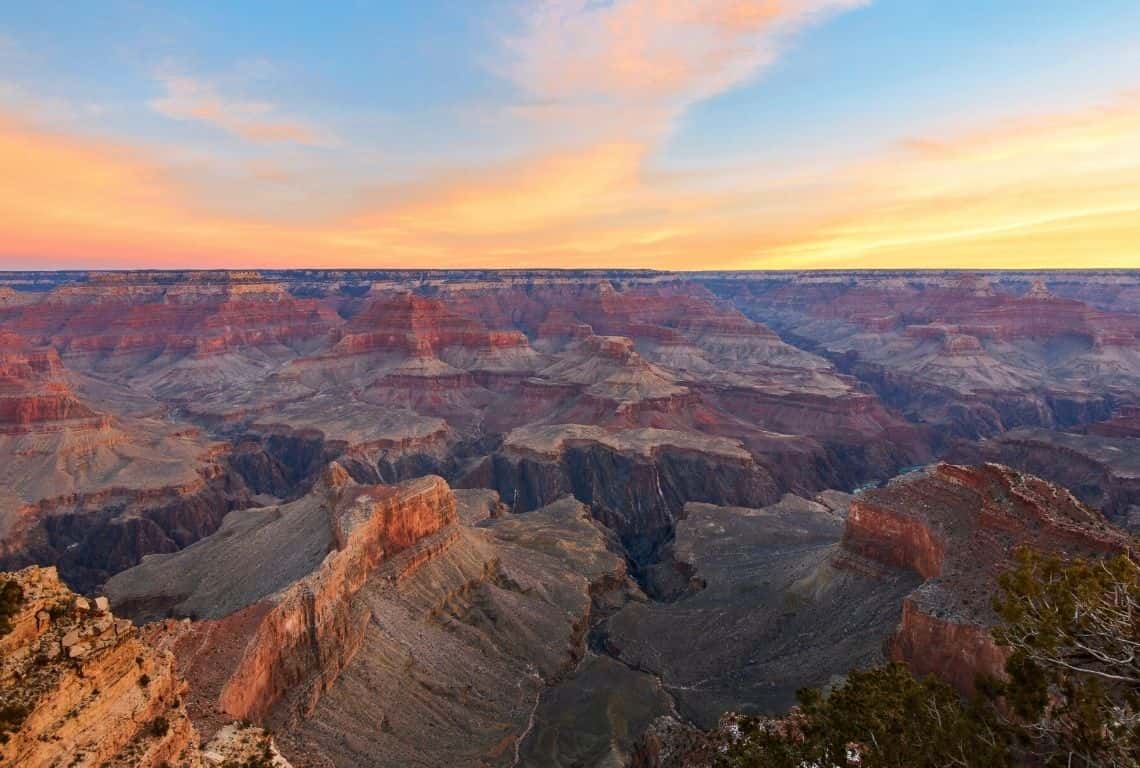
Hopi Point / Tips for First Visit to Grand Canyon
GOOD TO KNOW: If you’re visiting in the summer, sunrises are early (around 5 AM), and sunsets are late (close to 8 PM). Plan accordingly, dress in layers (mornings can be chilly!), and bring a flashlight if you’re staying out after dark.
Get Your Park Pass Ahead of Time & Consider an Annual Pass
Everyone visiting Grand Canyon National Park needs a recreational use pass, which you can buy at the entrance or online in advance. The pass is good for seven consecutive days and covers both the South Rim and North Rim.
Grand Canyon Entrance Fees:
- Vehicle Pass – $35 (covers one private vehicle and all passengers)
- Motorcycle Pass – $30 (covers one motorcycle and passengers)
- Individual Pass – $20/person (for those entering on foot, by bicycle, shuttle bus, or Grand Canyon Railway)
- Kids 15 and under get in for free
If you’re planning to visit multiple national parks on your trip, the America the Beautiful Annual Pass is a steal at $80. It grants access to over 2,000 federal recreation sites.
PRO TIP: The Grand Canyon pairs perfectly with Zion and Bryce Canyon, so if they’re on your list, the annual pass will pay for itself. You can buy it online before your trip!
Use the Grand Canyon Shuttle Bus
Driving inside Grand Canyon National Park can be a challenge, especially during peak seasons when parking is limited. But the free shuttle bus system takes the stress out of getting around, and it’s the best way to see all the major spots without worrying about your car.
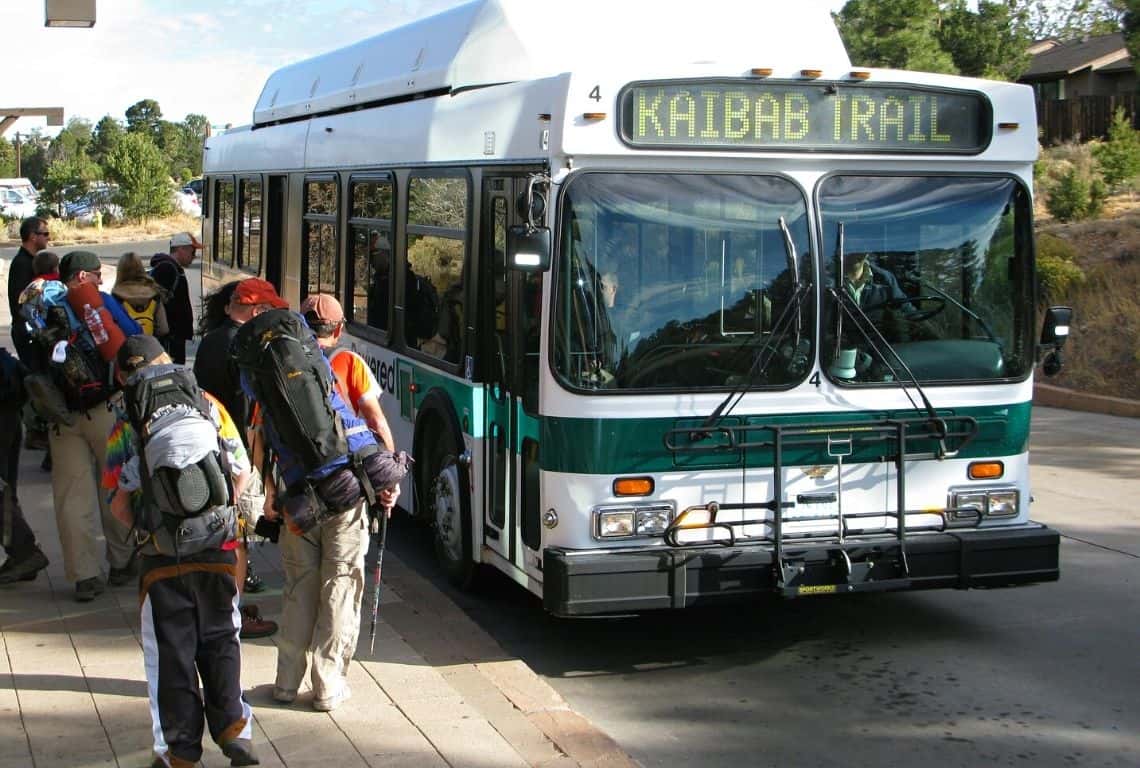
Grand Canyon Shuttle / Tips for First Visit to Grand Canyon
Shuttle Routes You Need to Know:
- Village (Blue) Route – Connects lodges, restaurants, visitor centers, and parking. Great for getting around Grand Canyon Village.
- Kaibab Rim (Orange) Route – Takes you to sunrise spots like Yaki Point and the South Kaibab Trailhead (private vehicles aren’t allowed here).
- Hermit Road (Red) Route – This route is a must for visiting Hermit’s Rest and the viewpoints along Hermit Road. Private vehicles are not allowed on Hermit Road, so the shuttle is your only option here. It runs from March to November and stops at Hopi Point, Mohave Point, and other top spots.
- Tusayan Route – If you’re staying in Tusayan, this shuttle runs from March to October, taking you directly into the park without the need to worry about parking at the entrance.
Don’t Rely on Cell Phone Service
One thing you should know before heading to Grand Canyon National Park is that cell phone service is spotty—or non-existent—once you’re inside the park. Don’t count on using your phone for directions or looking up information while you’re there.
Even at the South Rim, the service can be unreliable, and at the North Rim, it’s basically nonexistent. While most lodges inside the park offer basic Wi-Fi, it’s slow and inconsistent, especially during peak seasons.
PRO TIP: Download offline maps for the Grand Canyon area before you leave—Google Maps and other apps can help you navigate, even without service!
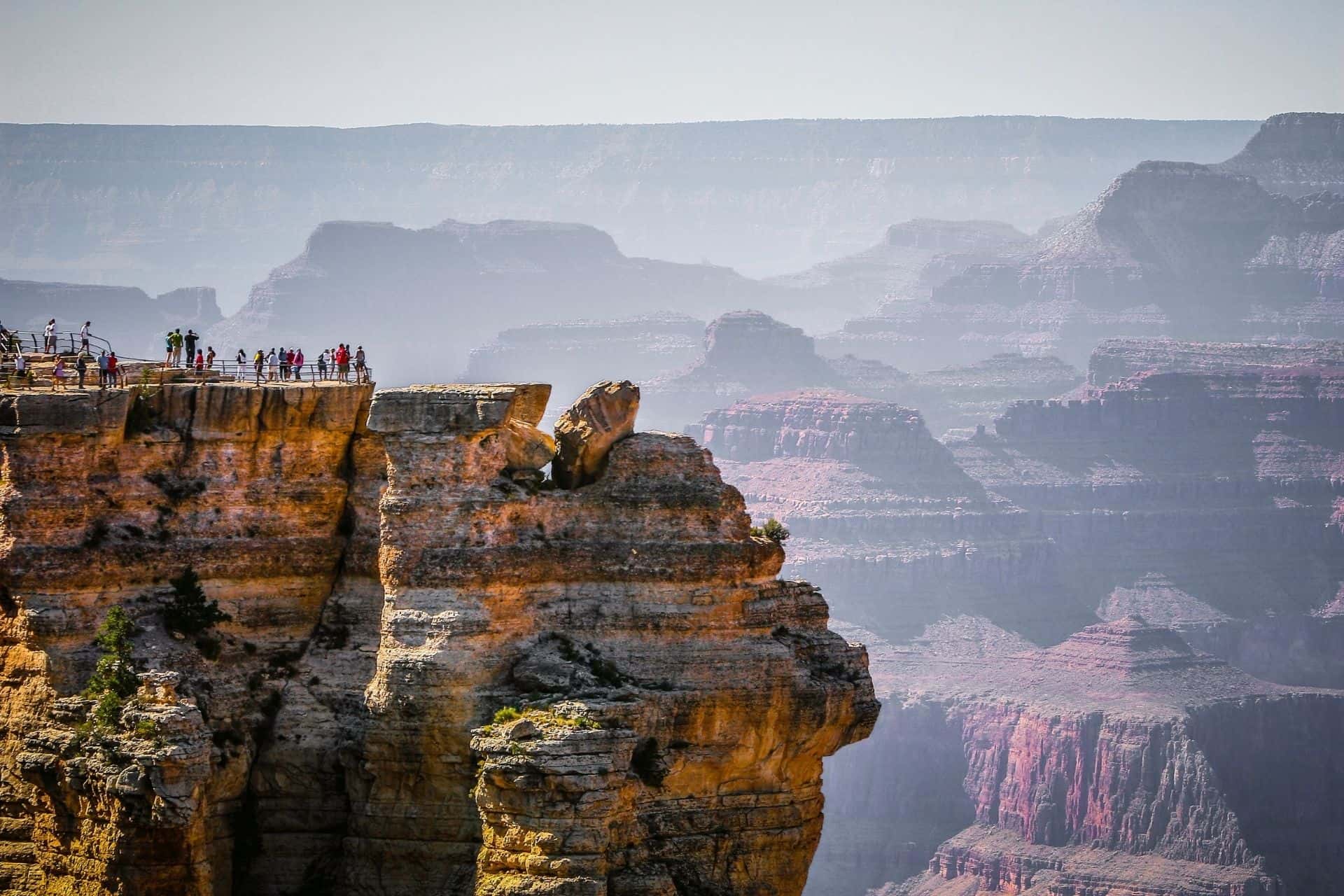
Grand Canyon National Park / Tips for First Visit to Grand Canyon
Quick Facts About the Grand Canyon You Should Know
- One of the Seven Wonders – The Grand Canyon is often considered one of the seven wonders of the natural world.
- It’s Massive – The canyon stretches 277 miles (446 km) in length, with its widest point being 18 miles (29 km) across.
- Deep and Steep – It’s 6,000 feet (1,800 meters) deep at its greatest depth.
- The Colorado River – The Colorado River runs through the canyon, having eroded its sides for millions of years.
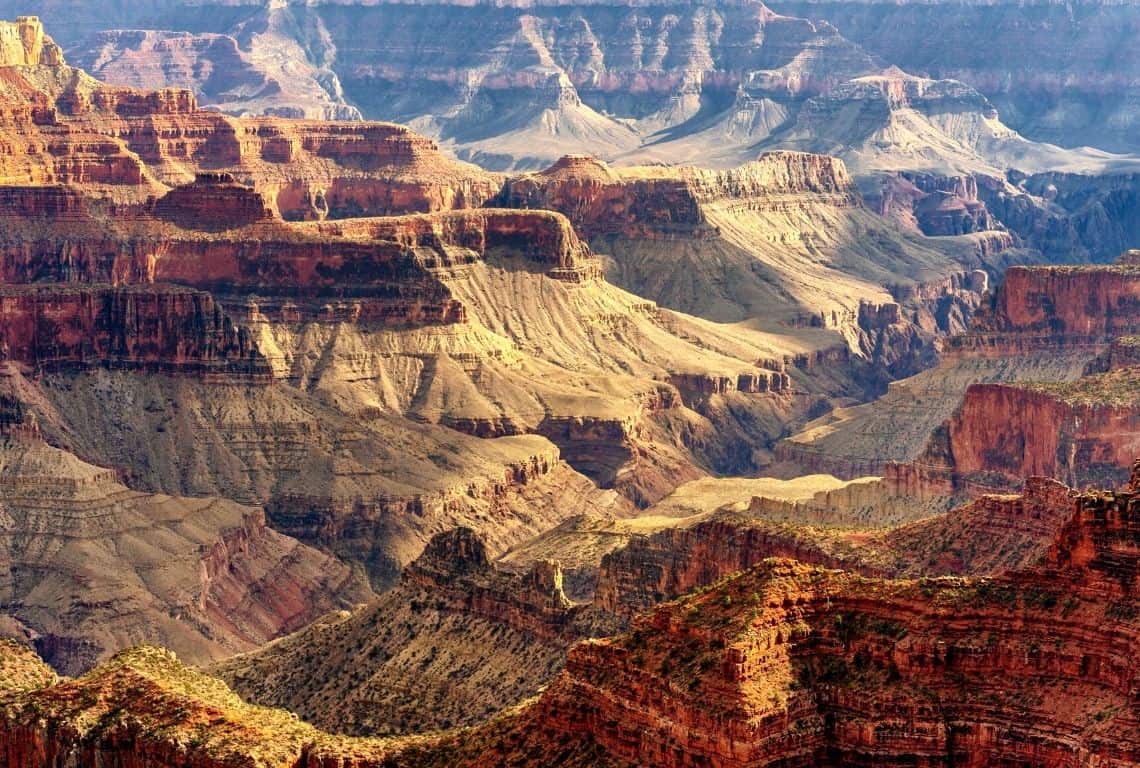
Colorado River / Tips for First Visit to Grand Canyon
- Geological Significance – The rocks at the canyon’s bottom are 2 billion years old, while the upper layers are around 230 million years old.
- Historic First Expedition – John Wesley Powell led the first expedition through the Grand Canyon in 1869.
- National Park Status – The Grand Canyon became a national park in 1919, the 17th one in the U.S.
- Popular Destination – Over 5 million people visit the South Rim each year!
Check Out the Viewpoints on Hermit Drive

Map of Grand Canyon South Rim (West Side). Image Source: NPS / Tips for First Visit to Grand Canyon
Take the Grand Canyon Shuttle Bus and stop by all the famous viewpoints ialong Hermit Road (west side).
Following are my favorite viewpoints along the South Rim.
- Yavapai Point: Yavapai Point sits at the most northerly section of the Grand Canyon South Rim. Consequently, you will get the best view of the famous three points: Cape Royal, Wotans Throne, and Vishnu Temple. In addition, look down the gorge and onto the serpentine Colorado River.
- Mather Point: Mather Point is the busiest viewpoint in the Grand Canyon South Rim. However, it is one of the park’s most spectacular vantage points. The Colorado River is practically below your feet. To the west is Bright Angel Trail, to the east is the South Kaibab Trail, and straight ahead is the North Rim.
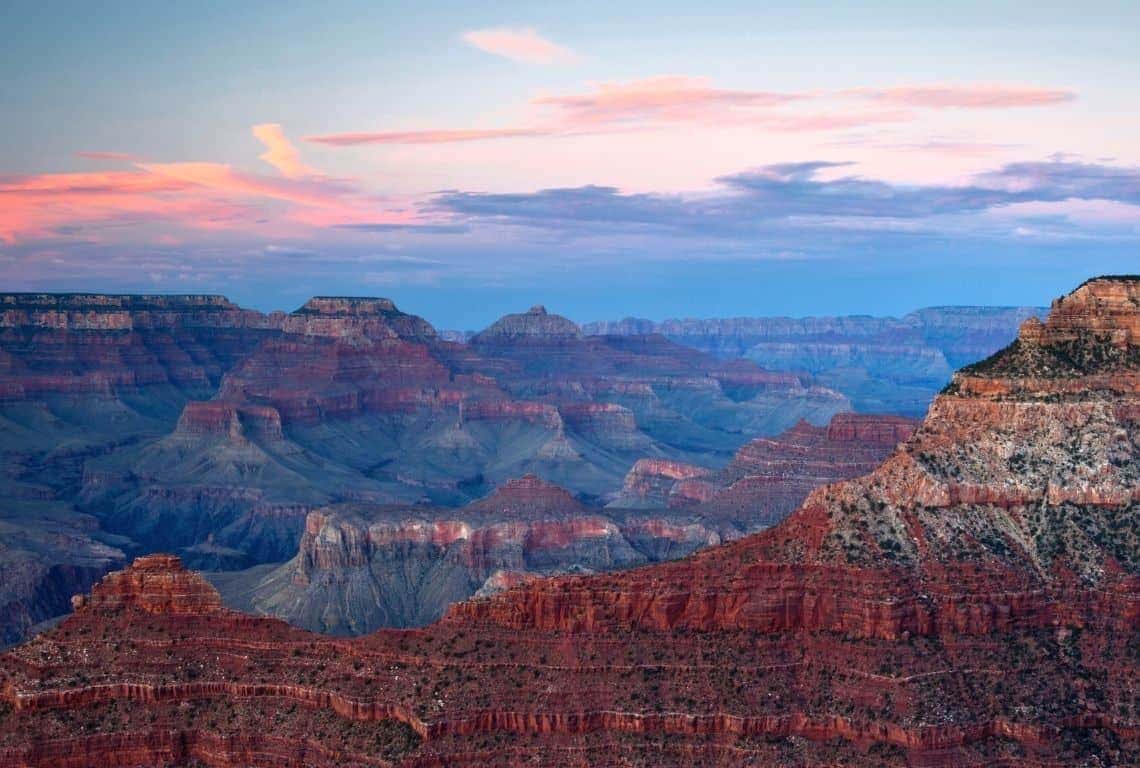
View from Mather Point of the Famous Three Points: Cape Royal, Wotans Throne, and Vishnu Temple
- Maricopa Point: Maricopa Point sits on a narrow promontory extending northeast and then dropping vertically. The vistas towards the east and west of the canyon are excellent here. In addition, the views extend to the North Rim.
- Hopi Point: Hopi Point is one of my personal favorites. It is one of the best all-around viewpoints in the Grand Canyon. Jutting out farther into the Canyon than any other point on the South Rim, Hopi Point offers incredible views.
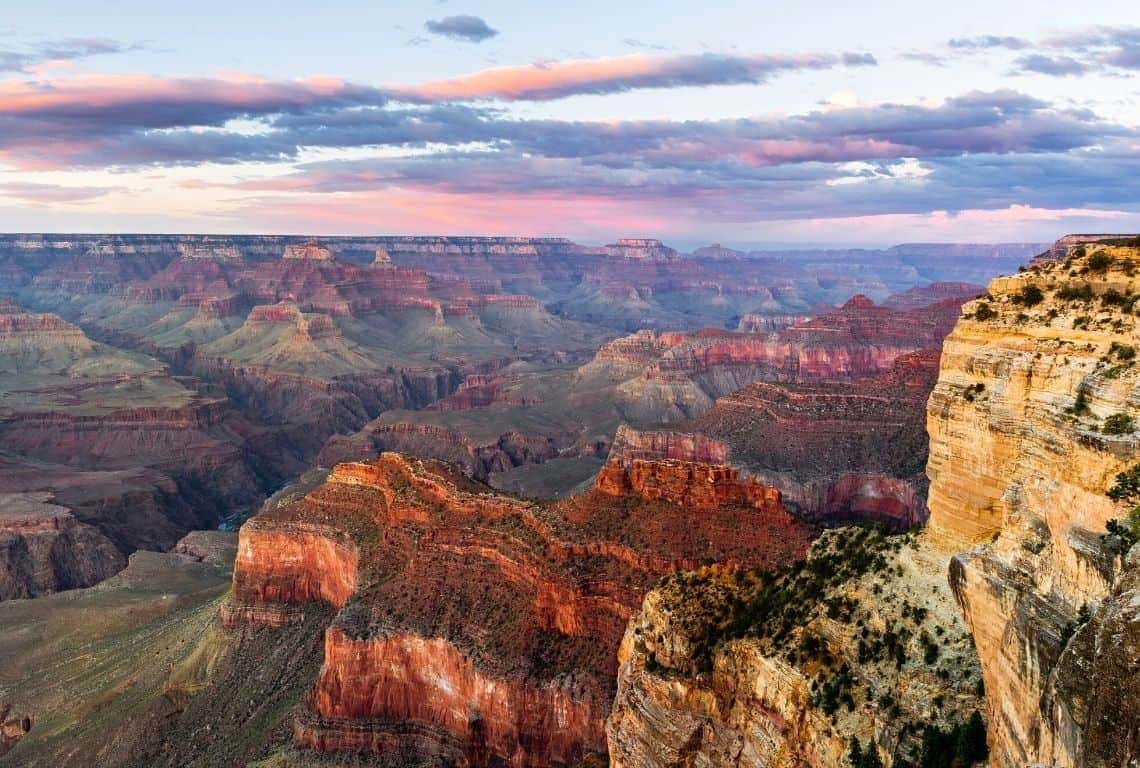
Hopi Point Offers Excellent Views of the Stone “Temples”.
- Mohave Point: Mohave Point is awesome! If you thought that Hopi Point was good, just wait till you get to Mohave Point. Not only you will catch the dramatic vistas here, but also you will be able to see some excellent views of the river and rapids below.
- Pima Point: At Pima Point, you will get one of the best views of the Grand Canyon South Rim and probably the most spectacular one of the Colorado River and rapids below. In addition, the views to the east are stunning.
Take a Scenic Drive Along Desert View Drive
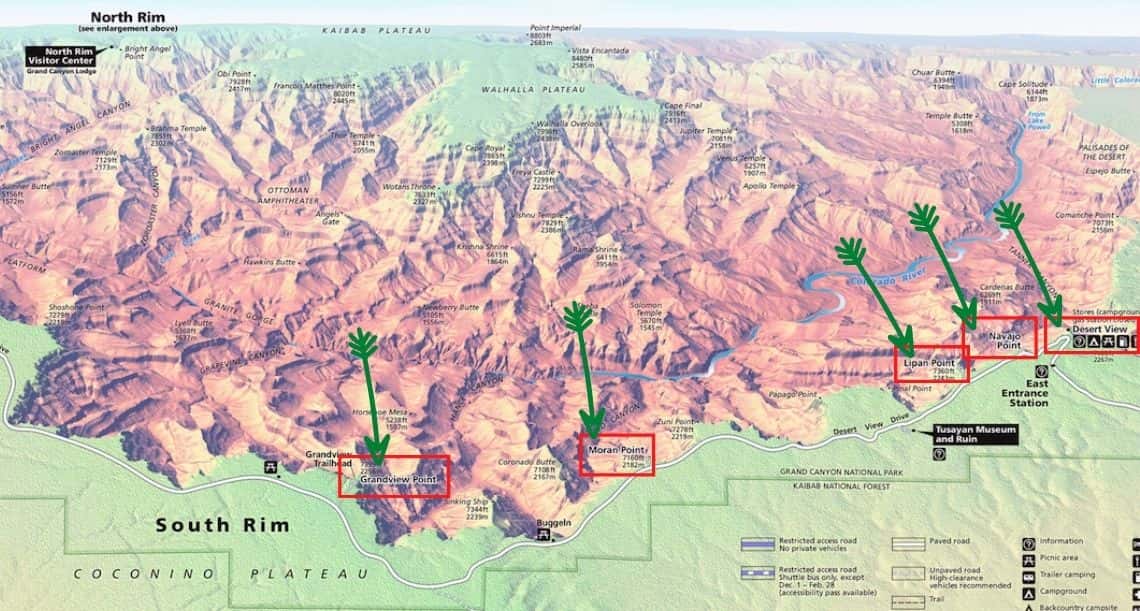
Map of Desert View Drive in Grand Canyon National Park. Image Source: NPS / Tips for First Visit to Grand Canyon
A scenic drive along Desert View Drive is a must when visiting the Grand Canyon South Rim. Unlike other areas, no shuttle buses operate here, so you’ll need your own vehicle. Along the way, stop at these breathtaking viewpoints:
- Grandview Point: At 7,100 feet, Grandview Point is one of the highest and southernmost viewpoints. The views stretch over dense forests and Horseshoe Mesa below. It’s also the starting point for the Grandview Trail, a steep but rewarding hike.
- Moran Point: Moran Point offers wide-angle views of the canyon’s stunning rock formations. Below, Red Canyon glows with deep reds and oranges, and the Colorado River makes a striking appearance. Look for the Sinking Ship, a rock formation that tilts like a sinking vessel.
- Desert View: At 7,438 feet, Desert View is the highest viewpoint on the South Rim. The Desert View Watchtower, designed by Mary Colter, is a must-see. Climb the spiral staircase inside to see murals, historic architecture, and stunning panoramic canyon views.
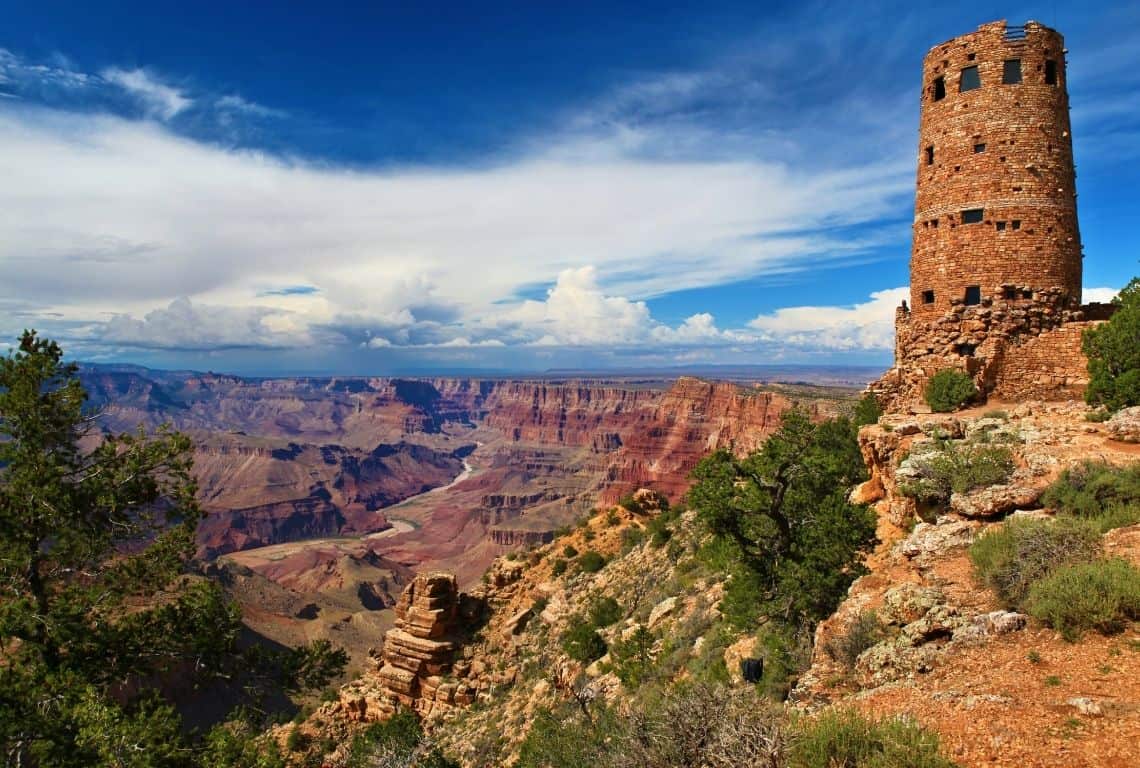
Desert View Watchtower Designed by Mary Colter / Tips for First Visit to Grand Canyon
Hike Below the Rim
The best way to get the full Grand Canyon experience is to mix the scenic viewpoints with some hikes below the rim:
- South Kaibab Trail If you can only do one hike at the Grand Canyon, then the South Kaibab Trail is the best choice. Be prepared to be amazed by the sweeping views as you hike along a dramatic ridgeline. Above all, you will get to see the spectacular beauty of the Grand Canyon from below the rim.
The majority of the hikers trek to Ooh-Aah Point or Cedar Ridge and back. Some hikers continue to Skeleton Point. It is entirely up to you how far you want to hike.
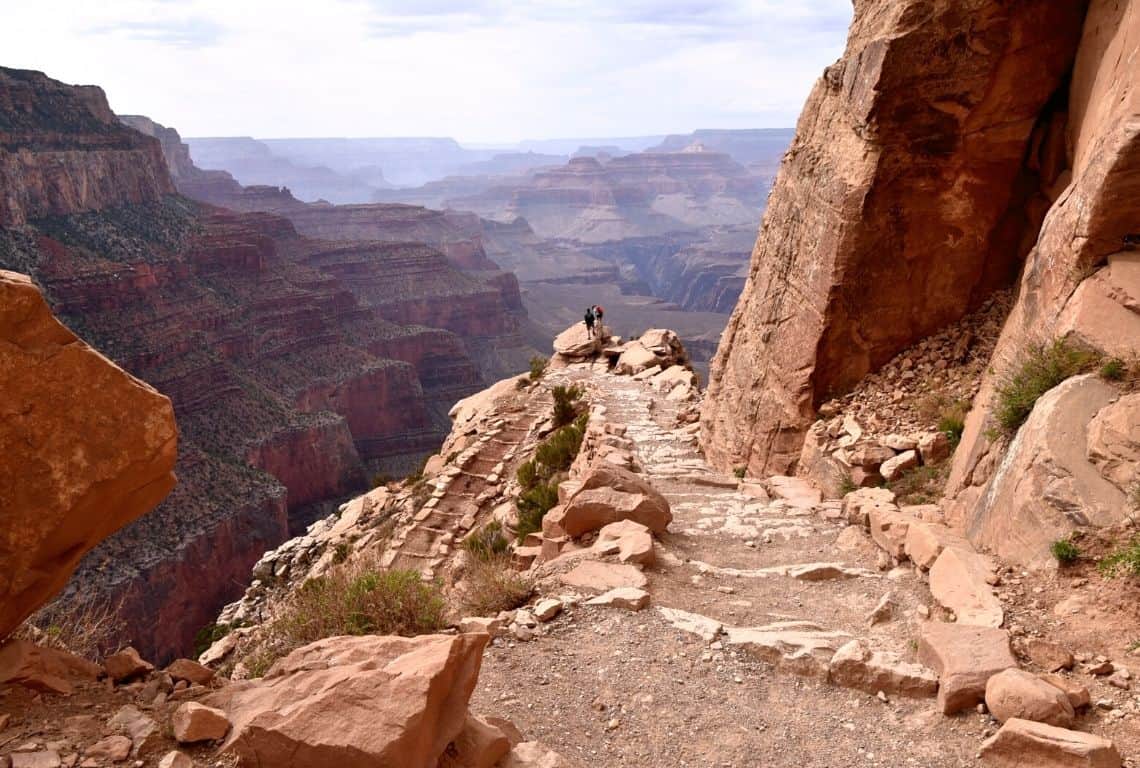
South Kaibab Trail / Tips for First Visit to Grand Canyon
- Bright Angel Trail
Another great trail that will take you below the rim is Bright Angel Trail. It is your best choice if you have never hiked in the Grand Canyon before. It is a very well-maintained trail.
There is regular drinking water and covered rest houses along the way. In addition, there are ranger stations located at the trail’s halfway point (Indian Garden) and the bottom of the canyon (Bright Angel Campground).
Above all, be prepared to be stunned by the sweeping views as you hike below the rim along Bright Angel Trail.
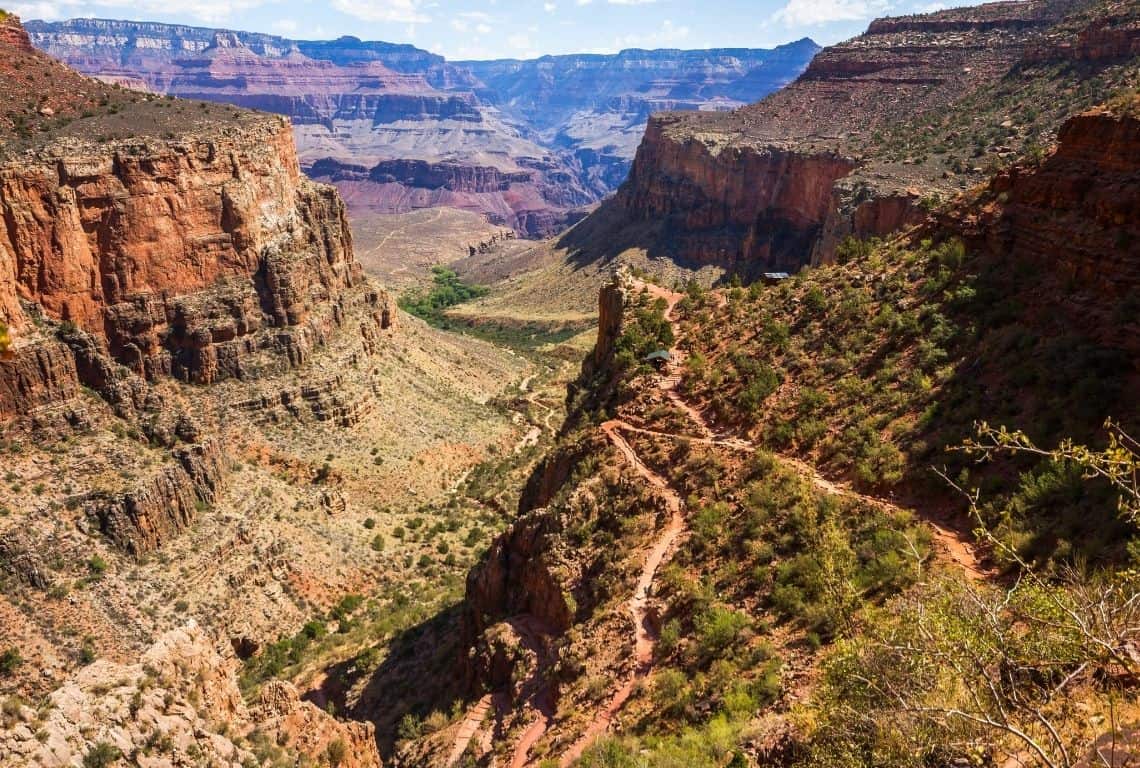
Bright Angel Trail / Tips for First Visit to Grand Canyon
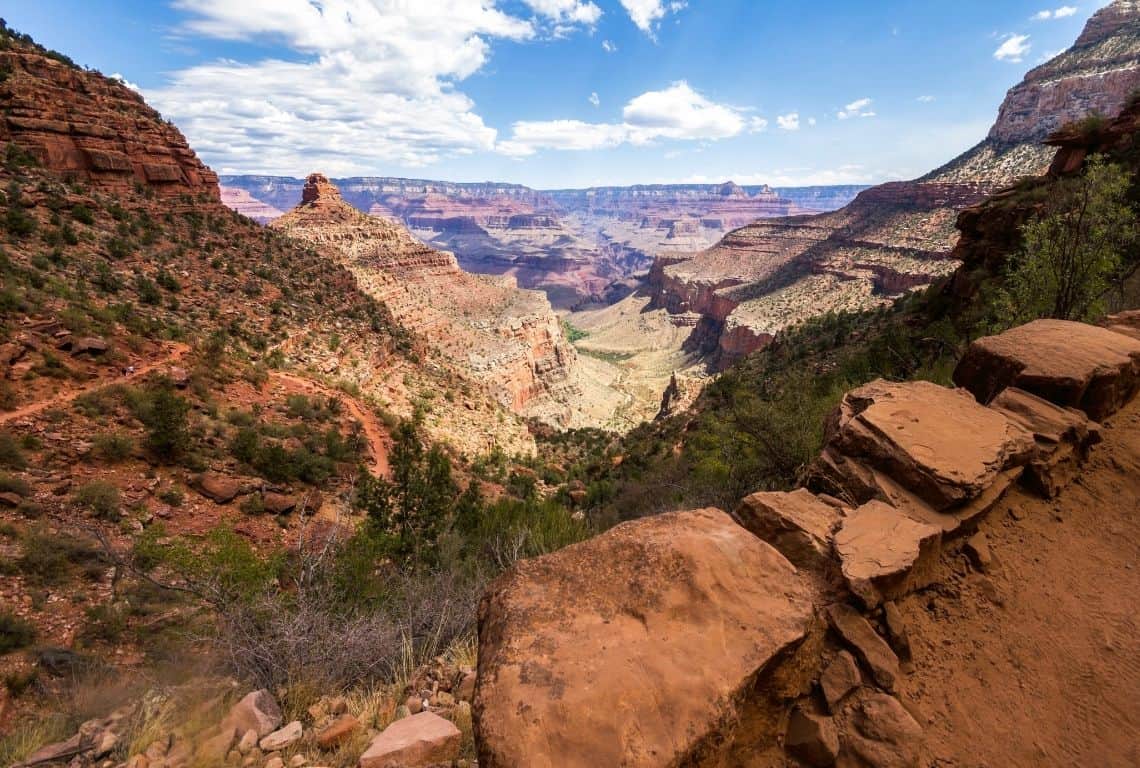
Bright Angel Trail / Tips for First Visit to Grand Canyon
Escape the Crowds And Visit the Grand Canyon’s North Rim
While the South Rim gets all the attention, the North Rim offers a completely different experience—fewer crowds, cooler temperatures, and some of the most breathtaking viewpoints in the park.
The North Rim sits at over 8,000 feet in elevation, making it noticeably cooler than the South Rim. It’s surrounded by dense forests of pine and aspen, giving it a totally different feel.
The viewpoints here, like Bright Angel Point, Cape Royal, and Point Imperial, offer stunning, sweeping views with hardly anyone around.
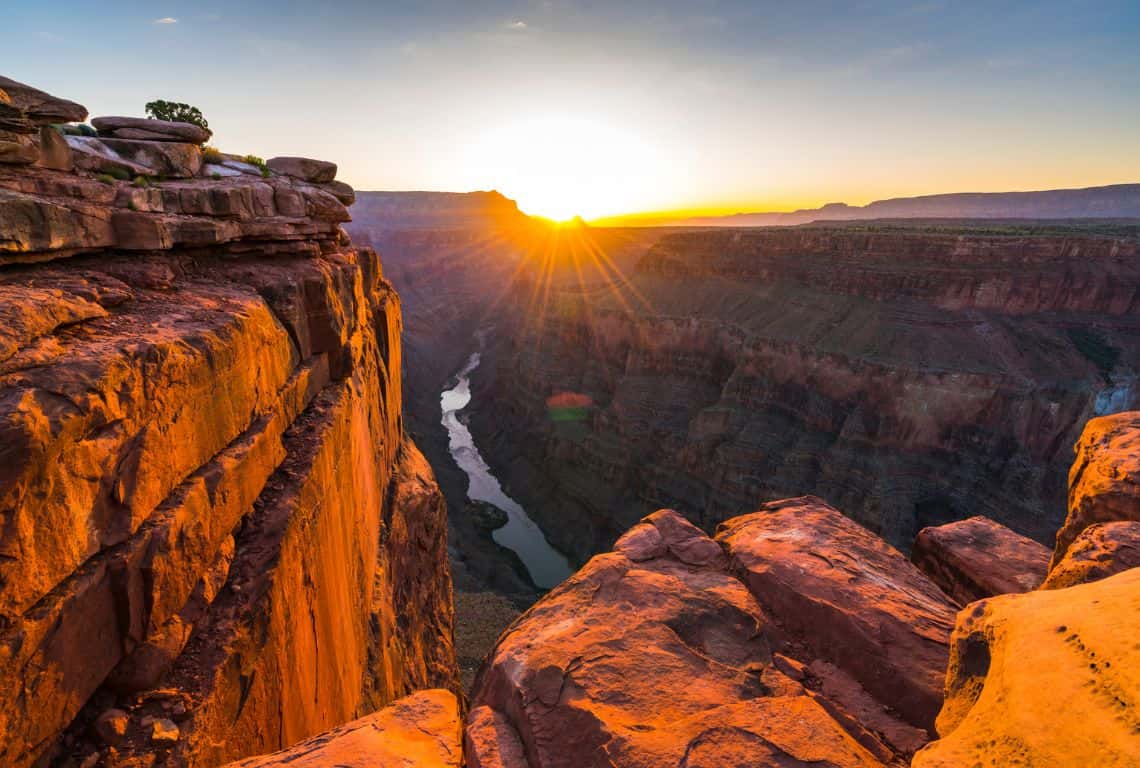
North Rim / Tips for First Visit to Grand Canyon
Unlike the South Rim, the North Rim is only open from mid-May to mid-October for lodging and services.
If you’re planning to stay overnight, book well in advance—Grand Canyon Lodge is the only in-park lodging, and it fills up fast. Camping is another great option, and there are even free dispersed camping spots in Kaibab National Forest with incredible canyon views.
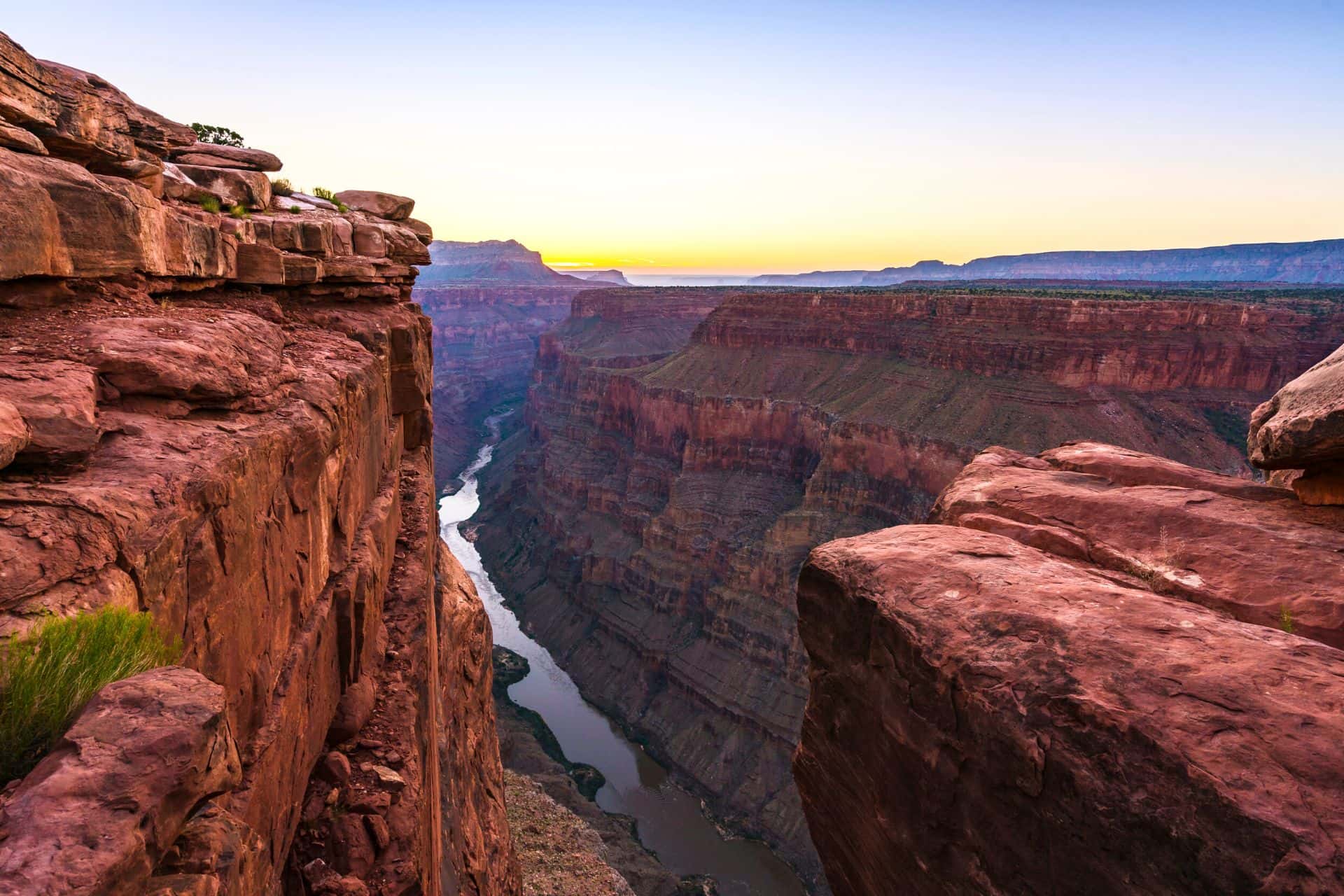
North Rim / Tips for First Visit to Grand Canyon
GOOD TO KNOW: The North Rim is remote—about a 4.5-hour drive from the South Rim—so plan accordingly. Gas stations and food options are limited, so stock up before you go. Also, always check the road conditions, especially in late fall, as early snow can close the roads unexpectedly.
Visit More US National Parks:
Learn More About US National Parks:
13 Best Stops on Scenic Drive in Zion National Park (Maps+Tips)
13 Great Hikes in Zion National Park You Need to Explore
4 Amazing EASY HIKES in Bryce Canyon National Park (Maps+Photos+Tips)
42-Mile SCENIC LOOP DRIVE in GRAND TETON (24 Stops You Can’t Miss)
2 DAYS in MESA VERDE National Park (Perfect Itinerary for First Visit)
Travel Planning and Road Trip Ideas:
Zion to Bryce Canyon in 3 Days (Itinerary Ideas+Useful Tips)
Did You Find Tips for First Visit to Grand Canyon Useful?
Why Not Save It to Your Pinterest Board!
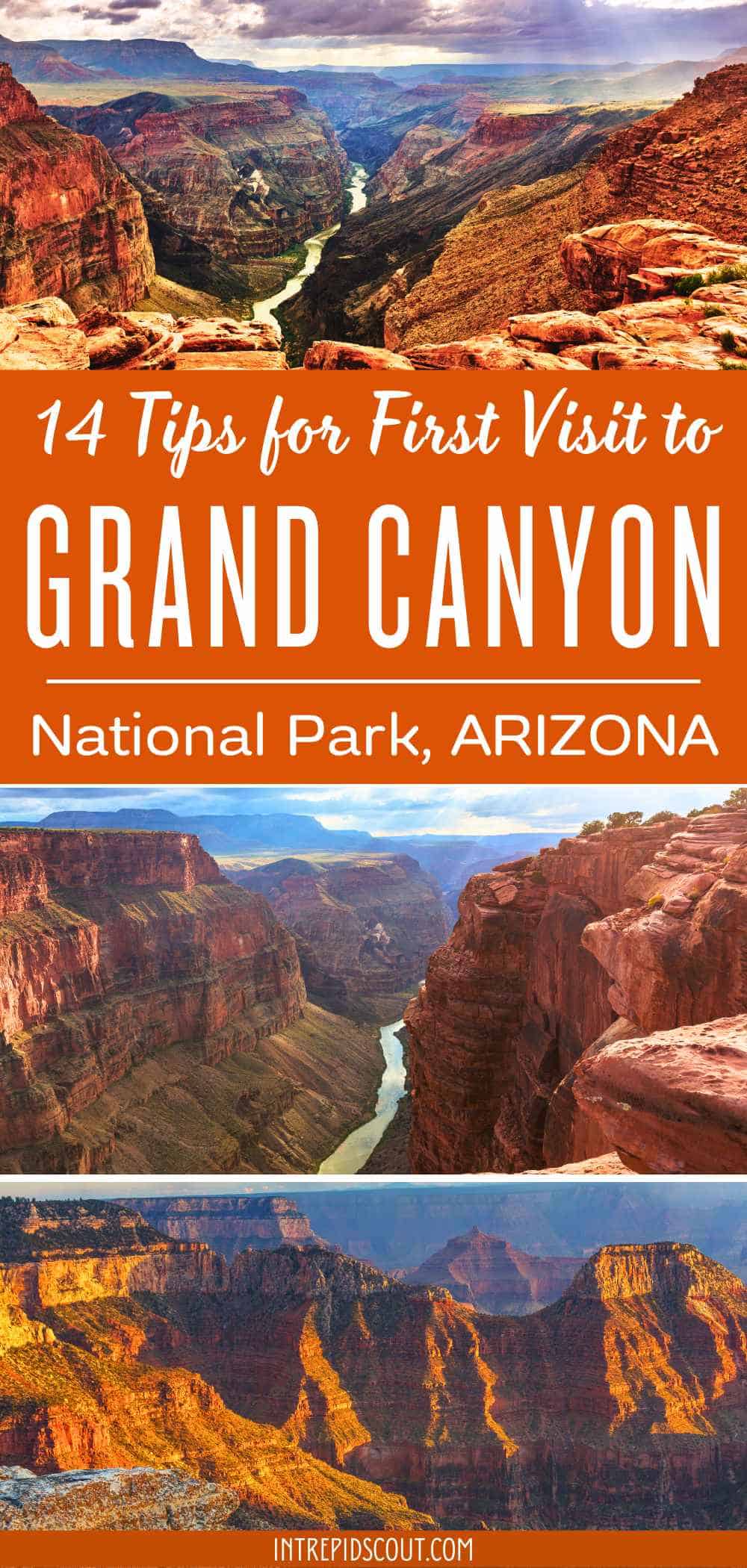
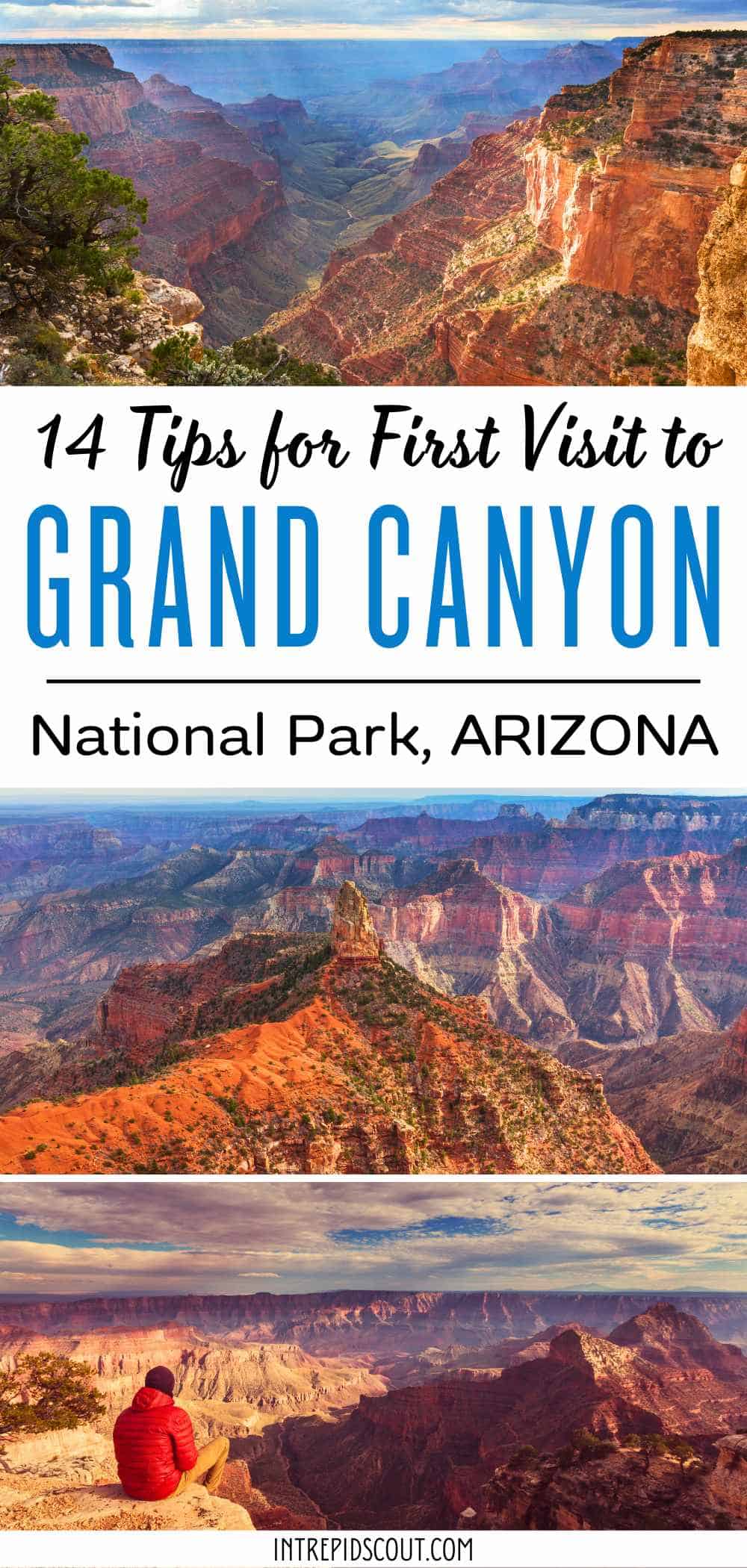
Now, It Is Your Turn, I Would Like to Hear Back from You!
Are you planning your trip to Grand Canyon National Park?
Please let me know! Drop me a quick comment right below!
Click on any of the images below to get inspired and to help you with the planning process with your trip to Grand Canyon National Park!
